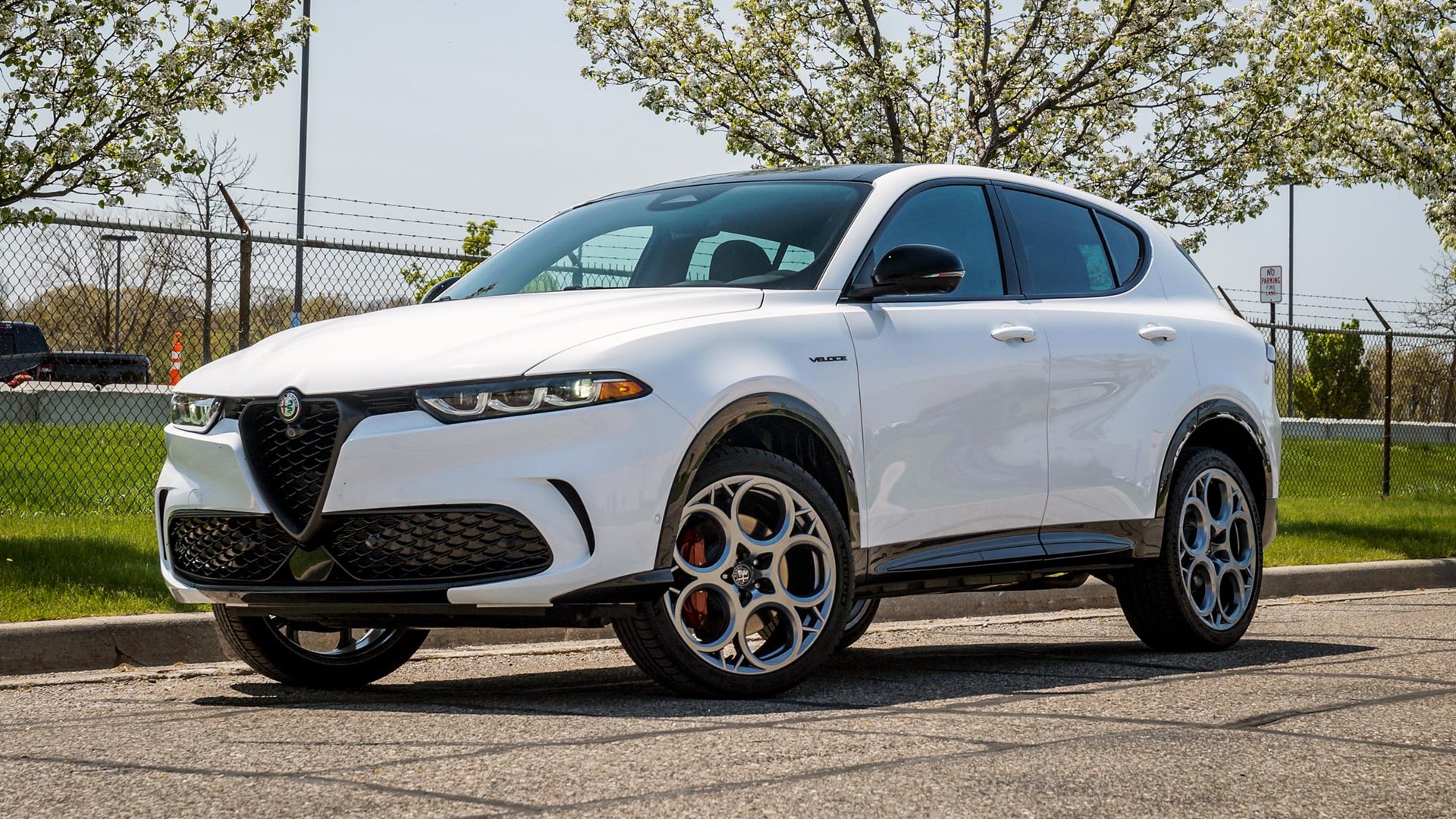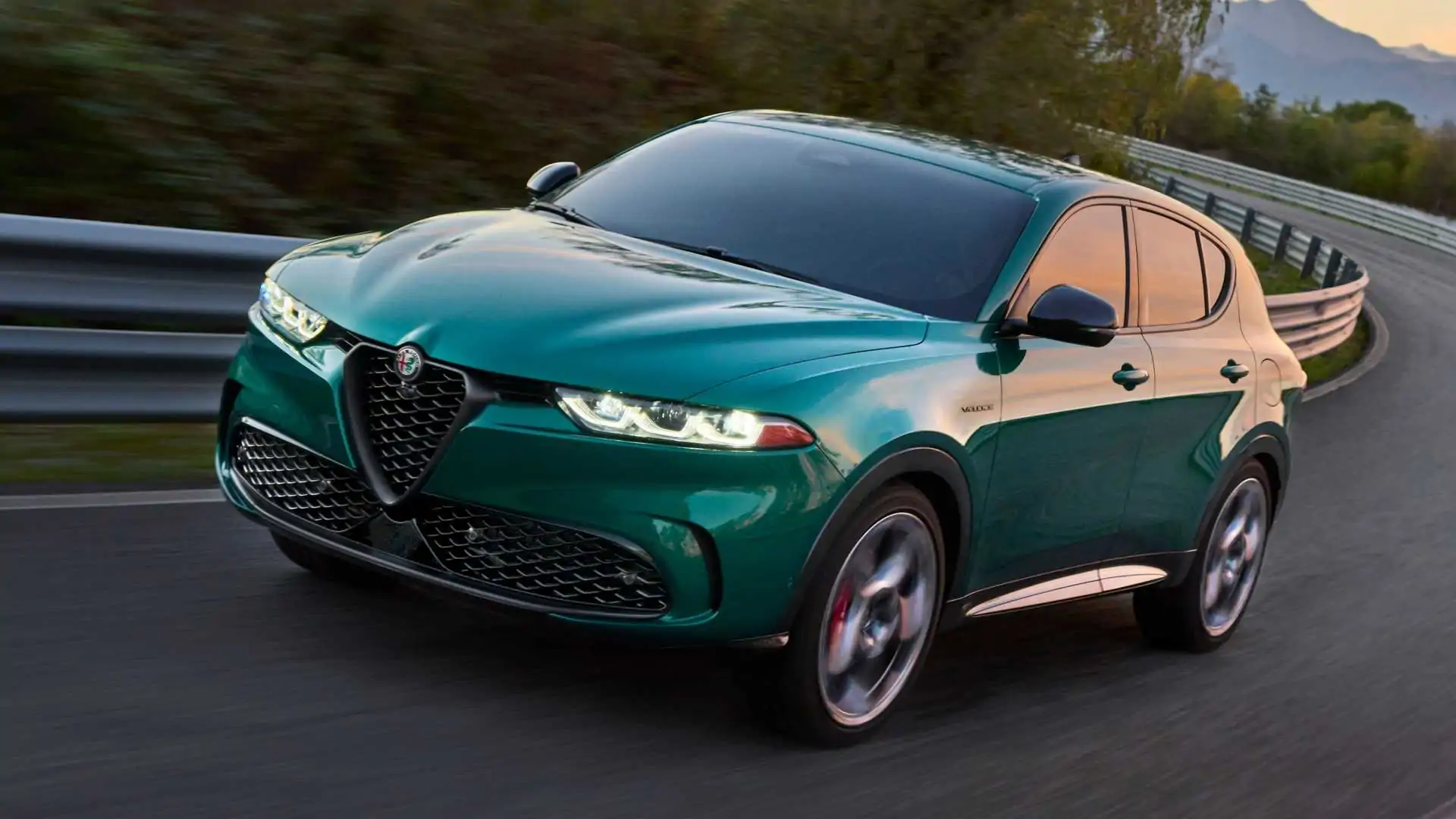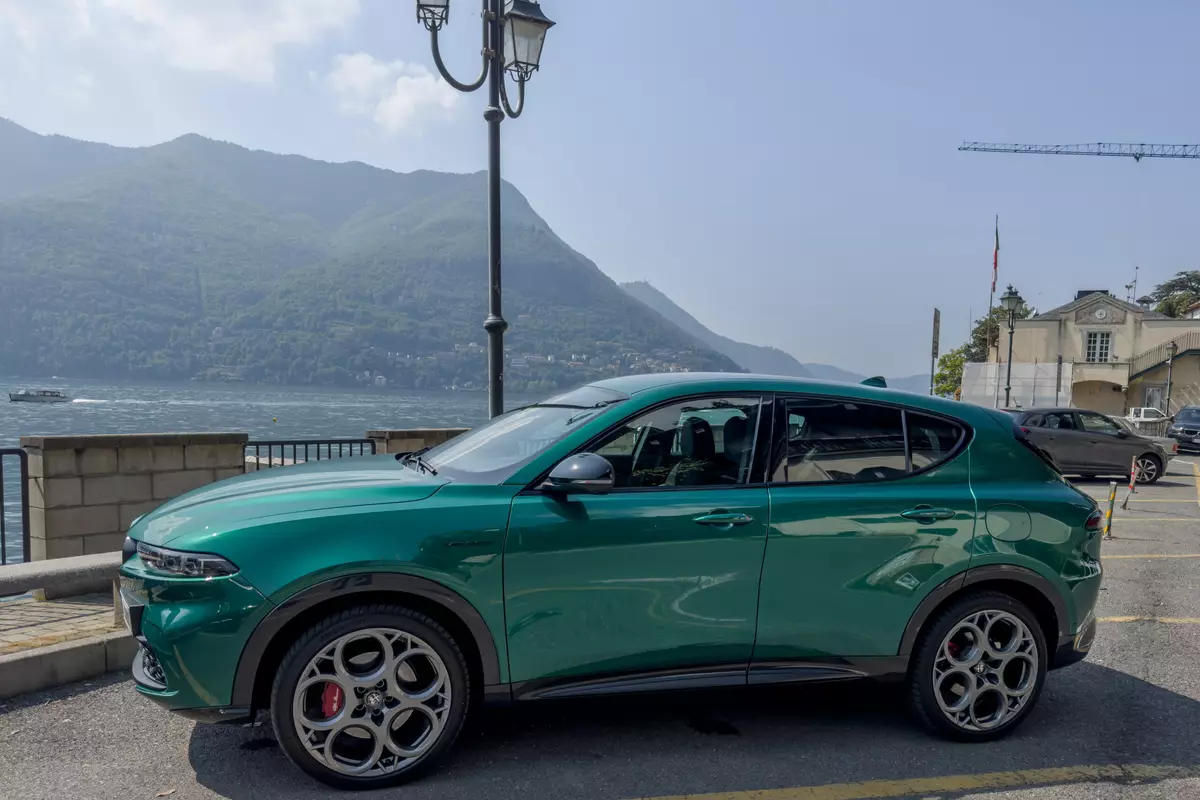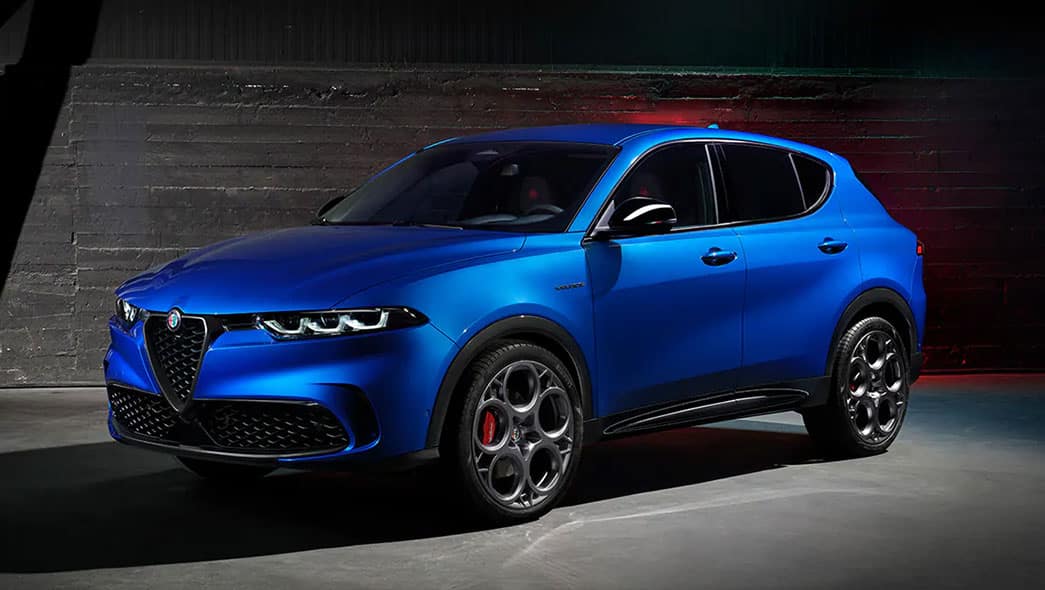We’ve moved beyond the era of surprise when well-established sports car and sports sedan manufacturers venture into the SUV market. However, it remains a challenge to infuse these vehicles with a distinctive brand identity, and this task becomes even more complex when incorporating electrification.
Alfa Romeo, nevertheless, made a commendable attempt with its debut SUV, the high-performance Stelvio. Now, they’ve introduced the Tonale – a smaller, more affordable model based on a shared platform and featuring a partially electric powertrain. Yet, the Tonale’s character seems somewhat diluted compared to its more spirited showroom counterparts.
Pros:
1. Seamless Integration of Gas and Electric Power: The Tonale successfully blends gas and electric powertrains, offering a solid electric range and delivering a credible handling experience.
2. Distinctive Alfa Romeo Design: The Tonale’s design elements, such as its triple-LED headlights, triangular center grille, and unique wheel design, unmistakably carry the “Alfa Romeo” signature, even though the vehicle’s overall compact-crossover shape may differ from traditional Alfa models.
3. Variety of Trim Levels: The Tonale is available in three trim levels: Sprint, Ti, and Veloce, catering to different preferences and budgets. Prices range from $44,590 to $49,590, with the fully-loaded Veloce model reaching $57,950.

Plug-in Hybrid Powertrain:
In the United States, the Tonale is exclusively offered as a plug-in hybrid. This powertrain combines a 180-hp turbocharged 1.3-liter four-cylinder engine driving the front wheels through a six-speed automatic transmission and a 121-hp electric motor that powers the rear wheels.
The total output is a robust 285 horsepower and 347 pound-feet of torque. While the Tonale shares a similar powertrain with the Dodge Hornet, it doesn’t incorporate the Hornet’s PowerShot feature.
Despite its weight, the Tonale accelerates from 0 to 60 mph in 5.5 seconds and completes the quarter-mile in 14.2 seconds at 96 mph, matching the Dodge Hornet’s performance. In certain passing maneuvers, the Tonale outperforms the Hornet by 0.4 seconds, questioning the effectiveness of the PowerShot feature.
Although the Tonale boasts 44 more horsepower and 52 additional pound-feet of torque compared to the BMW X1, it doesn’t surpass the X1’s 0-60 mph time due to its higher curb weight.
Nevertheless, the instant torque from the electric motor compensates for the Tonale’s smaller turbocharged engine, making it faster in the 5-to-60-mph sprint compared to the X1. The Tonale also outpaces the Mercedes-Benz GLA250 and the non-electrified Volvo XC40 in terms of acceleration.

Drive Modes and Performance:
The Tonale offers three drive modes: Dynamic (D), Natural (N), and Advanced Efficiency (A or EV mode). These modes also influence the steering, adaptive dampers (Veloce trim only), and brake regeneration.
The default Natural mode relies heavily on electric power, allowing the vehicle to operate in EV mode even at highway speeds or during gentle acceleration. The Dynamic mode keeps the engine running, but its presence is not pronounced, and the electric motor’s whine or the regenerative brakes may be more noticeable.
The Tonale comes with regenerative braking, and the Veloce model is equipped with Brembo rotors, which help it stop from 70 mph in 165 feet, nearly matching the Hornet’s performance.
Cons:
1. Uninspiring Steering: The Tonale’s steering lacks sharpness and doesn’t provide a strong sense of straight-ahead driving. The vehicle’s handling is solid but not particularly engaging.
2. Lackluster Engine Sound: The engine’s vocal presence is limited, and it has a somewhat gravelly tone. The electric motor and regenerative brakes may be more audible.
EV Range and Brake Regeneration:
The Tonale features a 12.0-kWh battery, providing an EPA-estimated electric range of 33 miles. In a 75-mph highway range test, it achieved 32 miles. The EPA also rates the combined, city, and highway gasoline fuel economy at 29 mpg, which is consistent with the observed results in a 75-mph highway test after depleting the electric charge.
The vehicle includes an e-Save button on the console, allowing users to maintain the battery charge or have the engine recharge the battery up to a selected preset level.

Driving and Handling:
The Michelin Pilot Sport All Season 4 tires and adaptive dampers on the Tonale Veloce helped it achieve a skidpad result of 0.86 g. This performance closely mirrored that of the BMW X1 and the Hornet, which were both outfitted similarly. The dampers have two settings: Comfort and Sport, with Sport being firmer but not harshly so. The mediocre steering is primarily to blame for the vehicle’s lack of engagement despite its sound handling.
Interior and Technology:
The Tonale’s interior includes a 10.3-inch center touchscreen and a 12.3-inch digital instrument cluster with customization options. Modern cabin architecture offers wireless phone mirroring and wireless device charging options. The Veloce model has firm seats, Alcantara upholstery with red accents or available leather, textured silver trim, and lighted red highlights on the dashboard.
Conclusion:
The Alfa Romeo Tonale has its unique moments, but overall, it drives more like a subcompact crossover than a genuine Alfa Romeo. It can be difficult to design a thrilling driver’s car in a highly competitive market, but the Stelvio has demonstrated that it is achievable. Alfa Romeo needs to figure out how to squeeze more of that personality into a more compact design.
Specifications:
– Vehicle Type: Front-engine, rear-motor, rear/all-wheel-drive, 5-passenger, 4-door wagon
– Price: Base/As Tested: $49,590/$57,950
– Powertrain: Turbocharged and intercooled SOHC 16-valve 1.3-liter inline-4, 180 hp, 199 lb-ft + AC motor, 121 hp, 184 lb-ft (combined output: 285 hp, 347 lb-ft; 12.0-kWh lithium-ion battery pack; 7.4-kW onboard charger)
– Transmissions: 6-speed automatic/direct-drive
– Suspension: Struts/struts
– Brakes: 13.5-in vented disc/12.1-in disc
– Tires: Michelin Pilot Sport All Season 4, 235/40ZR-20 96Y M+S Extra Load
– Dimensions: Wheelbase: 103.8 in, Length: 178.3 in, Width: 74.0 in, Height: 63.2 in
– Curb Weight: 4291 lb
– Fuel Economy: Observed: 28 MPGe, 75-mph Highway Driving, EV/Hybrid Mode: 77 MPGe/29 mpg, 75-mph Highway Range, EV/Hybrid mode: 32/320 mi
– EPA Fuel Economy: Combined/City/High

